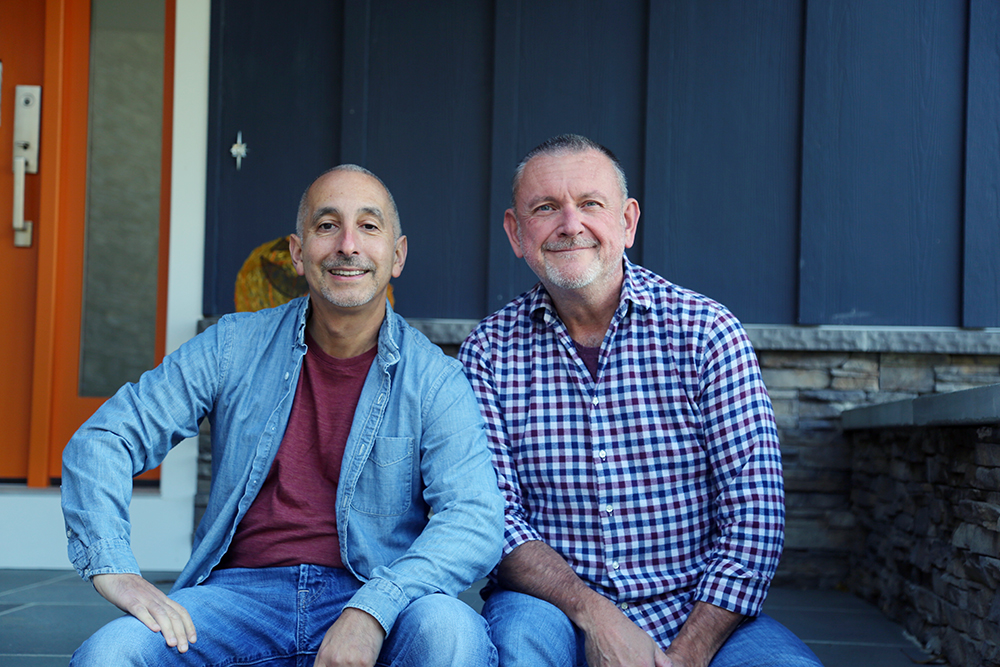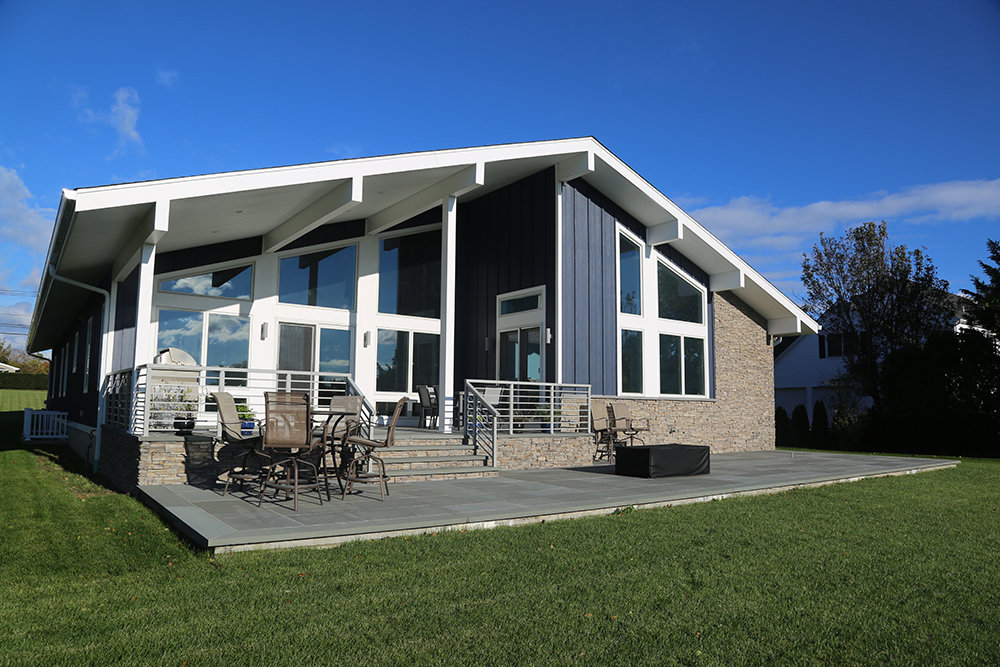A dreamy, green home on the North Fork honored at Archi Awards

Since first visiting the North Fork in 2000, John Daidone and Dan Gontcharenko became smitten by the quiet, rural landscape and local bounty they found here.
“We kept coming back to the North Fork,” said Mr. Daidone, 57, especially as the couple explored retirement digs.
The New Jersey residents made the full-time leap to Jamesport in April, in a newly built ranch that has caught the attention of professional architects.
Enamored by the abundance of local produce and fresh seafood available here, the couple began designing their North Fork dream home in 2016 when their Brooklyn and Bay Shore-based architect, James Bouler, made a suggestion.
Why not source your energy ‘locally,’ as well?
It took a bit of convincing, a year to build and added nearly $80,000 to the up-front cost before tax-credits and rebates.
Earlier this month, Mr. Bouler and the solar powered, geothermally-heated home were recognized by the Long Island chapter of the American Institute of Architects as being the best sustainably designed residence in the region at the Archi Awards.
The four-bedroom, two-and-a-half bath, 2,500-square-foot home is powered by 52 solar panels that generate 15.6 kilowatts of power and seamlessly blend into the roof’s horizontal roofline. During the summer, the geothermal system installed by PGI Geothermal absorbs heat from the home and transfers it to the underground loop where it is absorbed by the cooler earth. Cool water that returns from the ground is used to create cool, dehumidified air conditioning for the home. In winter months, the system absorbs heat from the ground that’s sent back as warm air.
“It’s been comfortable,” Mr. Daidone noted, since they moved in full-time in April.
The green energy is coupled with efficient LED lighting, water-saving fixtures and energy-star appliances, making it a ‘zero-energy’ home.

Working alongside the architect, solar technology executive Jean-Pierre Clejan of GreenLogic maximized solar capacity by installing a south-facing gable as Mr. Bouler included passive design elements, such as properly designed overhangs, that can reject or capture sun depending on the season to reduce heating and cooling loads.
Since connecting the solar inverter to the grid in May, the most they’ve paid on an electric bill is $13. “This month will probably be the first month we’ll have to tap into [banked energy],” said Mr. Gontcharenko, 59.
He feels proud to live in the award-winning home.
“It’s important that we’re contributing to lessening the impact of our energy footprint on the climate,” he said.
With no carbon footprint, Mr. Clejan said the structure will contribute to slowing the effects of climate change, improving air quality, and reducing dependence on fossil fuel while reducing risks of CO poisoning, and other risks associated with homes powered by fuel.
He said it should serve as a role model for others who are building new homes.
“This is a beautiful, well-designed custom home,” he said. “No compromises were made to the owners’ lifestyle and desires in order to achieve net zero: no carbon footprint, no fuel, no energy bill. That’s the holy grail these days in terms of sustainability.”
The mid-century modern California style ranch blends in with the neighborhood. “The house does not look like a science experiment,” Mr. Clejan continued.
Mr. Bouler said the project was an “absolute home run,” due to the location and its effective, simple design. Usually, he said, the ultra-modern designs get notoriety.
“To make a zero-energy house that’s more in a traditional vernacular, it’s uncommon. I love mid-century design, so it was a fun project. [The homeowners] had a clear vision.”
Mr. Bouler also had a clear vision for a sustainable home. The Alabama native — and “certified tree-hugger” — said the destruction he saw in the aftermath of the BP Deepwater Horizon oil spill in 2010 shaped that vision in countless of projects he’s had a hand in. “The use of oil, it’s not the future,” he said. “Architecture does have a responsibility to promote renewable energy as much as possible,” he added.
Hearing the news about the award came as validation for Mr. Daidone.
“You have a budget in mind when you go into it,” he said, “But it’ll be worth it in the long run.”









